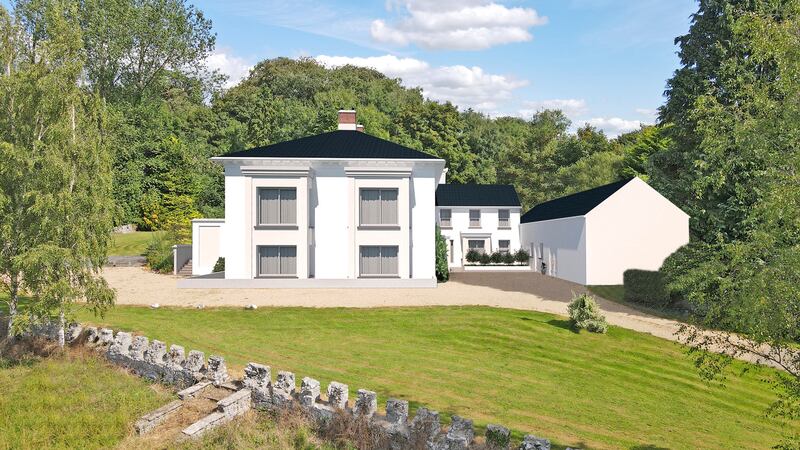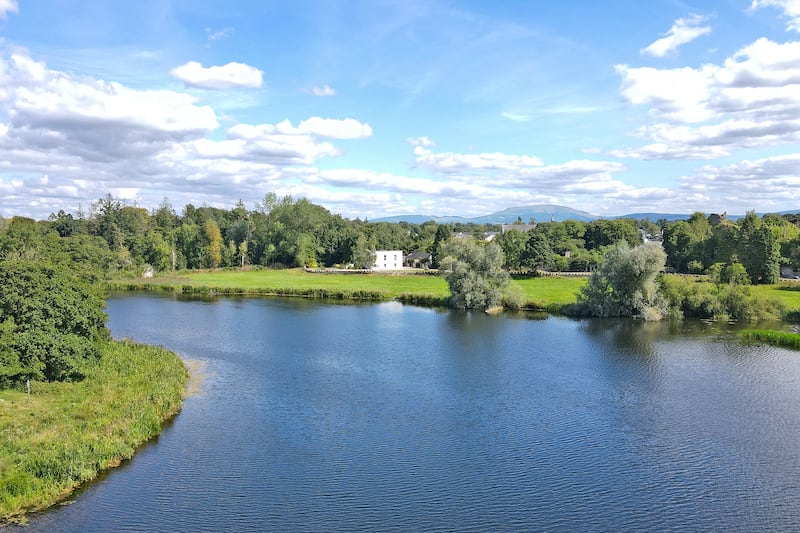From the mid-18th century, a building boom began in the village of Castleconnell, Co Limerick, with the erection of fine Georgian piles along the river Shannon. It was not just riparian aesthetics that appealed to the families who erected these distinctive homes on private grounds, but the bonus of fishing.
This still holds today as the Castleconnell Salmon Fishery is one of the most prestigious in the country. A further attraction at the time was that the village was a well-known spa resort and its waters were reputed to treat everything from jaundice to ulcers.
The finest of these homes was Mountshannon, by far the largest and most impressive, which met its fate like many great houses as it was burned to the ground during the War of Independence.


Trophy period homes here rarely come to the market as they tend to be homes for life. Over the past year, two Georgian piles on the river have come to the market: Shannon View has been listed sale agreed close to its asking price of €1.1 million, while Island House is now sale agreed for a sum believed to be close to its asking price of €2.25 million. Back in 2020, another Georgian pile on the river, World’s End House, the home of comedian Pat Shortt, achieved €1.15 million.
‘Christ, I’m angry’: Ciara Doherty’s striking interview with Andrew McGinley
I miss Ireland’s wildness and divilment, but after 20 years away, I know it’s not for me
Mark Lanegan, my uncle, died out of the blue after moving to Ireland
Bob Dylan in Dublin: It’s gripping, baffling and something to behold
Stormont House, another Georgian riverside house from mid-1800, has just been launched to the market, seeking €975,000 through Murphy Gubbins.
It was constructed for the Inghams, who were a wealthy Welsh coal-mining family. When the current owners purchased the house 52 years ago, it had a third storey. But as its condition at the time was so neglected, an architect advised to remove the top storey and leave the property with its current flat roof.
While advice today may differ entirely and be more along the lines of preserving its Georgian heritage, in 2018 the owners engaged architect Seamus Carr to design a new layout, which gives a pitched roof while also linking the house to an adjacent annexe: originally stables, since converted into living accommodation.


Though it currently extends to a generous 380 sq m (4,090 sq ft), planning granted in 2018 will allow for a renovated and extended home extending to a whopping 650 sq m (7,000 sq ft), which would make it one of the largest in the region.
The property is inverted whereby living spaces in the form of three reception rooms are upstairs to maximise the views though new sash windows, while four fine bedrooms lie on the ground floor.
Whether or not new owners decide to build and extend the C1-energy-rated property, it is the location on six acres adjacent to the river on the outskirts of the pretty village that will capture hearts.
Of historical interest is that the ruins of Caislean-ui-Chonaine, from which the village of Castleconnell takes its name, are located on the grounds of Stormont House. It was the seat of the O’Conaigs, which subsequently fell to the possession of the O’Briens of Thomond until it was destroyed during the Williamite-Jacobite War in Ireland.
To build or not to build will be the question as to the fate of Stormont House but, without a doubt, its location will be the very selling point now as it was when constructed here almost 200 years ago.














